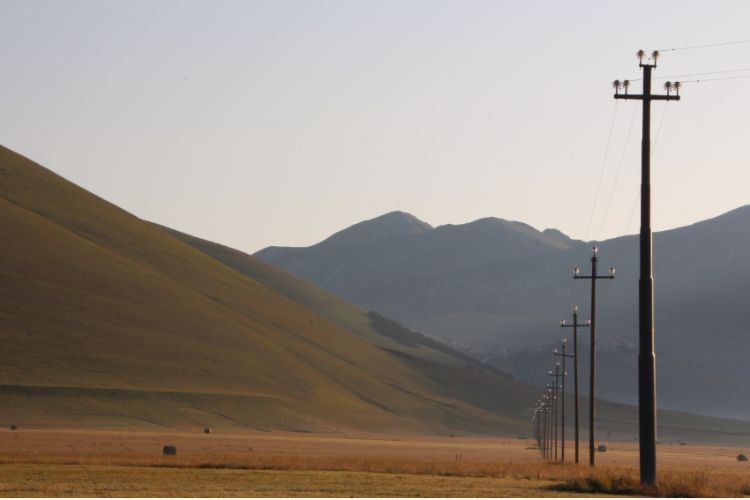What should be the political and regulatory priorities to ensure stable, resilient, and secure electricity grids for the benefit of citizens and businesses?
Vincenzo Ranieri: In the current geopolitical context, the EU must further recognize the strategic value of electricity distribution grids. Only with the right political and regulatory framework will the European grids be able to keep up with the expected growth of renewables and electrification.
The regulatory framework must be predictable, support resilient and secure infrastructure, and provide an adequate return on investment. Permitting processes should be simplified and accelerated through a swifter national implementation of EU Directives. Financial tools dedicated to distribution grids, such as direct EU funds like Horizon Europe, or shared management funds like the Cohesion Policy Funds, are important to support investments for the reinforcement, expansion, and modernization of the existing network.
Moreover, as outlined by the 2028-2034 Multiannual Financial Framework proposal, for the first time, distribution grids are deemed essential under the envisaged National and Regional Partnership Plans and the European Competitiveness Fund.
Finally, by securing supply chains, strengthening workforce capabilities, also through upskilling and reskilling programs, and ensuring stronger coordination between TSO and DSO, we can guarantee stable, resilient, and secure grids for European citizens and businesses.
Investments in distribution grids are not just technical necessities: they are strategic enablers of the EU’s economic strength
Anna Stürgkh:
We need to diversify our energy sources: only a modern, decentralised and renewables-based power system can make citizens and businesses independent from energy imports. To achieve this, we need a modern and secure grid infrastructure – both distribution and transmission.
Over 40% of our electricity distribution grids are 40 years or older and stem from a time with dominantly centralised electricity production. With a shift towards electrification, we face a significantly higher demand of electricity grid capacity. We need to expand and upgrade existing grids to increase their capacity. Modern technologies like Dynamic Line rating or digital solutions like virtual grids can help to increase capacity much quicker.
Increased digitalisation of the energy sector requires increased protection against cyber threats. Ensuring cybersecurity is paramount. This requires robust regulatory measures and continuous investment in cybersecurity technologies and practices.
Lastly, we need a truly European Grid Planning. Shortcomings in grid planning across borders lead to unmet capacity needs resulting in increased costs.
Therefore, regional cooperation and interconnectivity should be strengthened and complemented by a top-down approach based on reliable and replicable data.
How can investments in distribution grids become drivers of economic growth, industrial competitiveness, and strategic autonomy for Europe?
VR: Investments in distribution grids are not just technical necessities: they are strategic enablers of the EU’s economic strength. Grids secure the integration of decentralized renewables, electrified industries and ensure affordable, low-carbon energy for customers and businesses.
By accelerating grid modernisation, the EU can reduce dependence on imported fossil fuels, improving its trade balance and energy sovereignty. Investing in grids also creates powerful industrial stimulus, supporting local supply chains and construction services, generating high-quality jobs. Moreover, digital and flexible grids open new markets for SMEs and innovators, enabling services such as aggregation, flexibility platforms, and energy communities.
With reliable and competitive electricity, industries like steel, chemicals, and transport can electrify and decarbonise, strengthening Europe’s industrial competitiveness while attracting new investments. Crucially, a strategic approach to supply chains is needed to guarantee that the scale-up of grid investments translates into long-term industrial resilience, anchoring innovation and production capacity in Europe.
Regulators can maximise these benefits by ensuring predictable frameworks, aligning grid planning with industrial strategy, and supporting local manufacturing. In this way, grid investments become central to the EU’s growth, resilience, and long-term competitiveness.
 In the current geopolitical context, the EU must further recognize the strategic value of electricity distribution grids
In the current geopolitical context, the EU must further recognize the strategic value of electricity distribution grids
AS: While in a traditional grid, electricity would be transmitted via transmission lines to the lower voltage distribution grid or directly to energy intense sectors, generation in a renewables-based grid is decentralised. By 2040, €730 billion will need to be invested in distribution grids alone.
As these investments supply industry and citizens with reliable, renewable, low-priced electricity, they will drive economic growth, enhance industrial competitiveness, and contribute to Europe’s strategic autonomy by making us resilient against price shocks of imports. By making sure these investments are made with a focus on European supply chain, the grid build-out and modernisation can lead to an increase in value added as it progresses. The amounts are massive, and the urgency is high.
Therefore, we need to mobilise public money on the one hand. Several nationally managed EU funds are already available but underused for grids. Secondly, the recent MFF numbers promise a huge increase for the energy part under Connecting Europe Facility, mostly for cross border infrastructure.
Here, we need to make sure that electrification stays the priority, even if hydrogen infrastructure also plays a large role in the energy transition. Thirdly, we need to attract private capital by creating legal frameworks that enable these investments but also by making revenues more reliable.
As these investments supply industry and citizens with reliable, renewable, low-priced electricity, they will drive economic growth, enhance industrial competitiveness, and contribute to Europe’s strategic autonomy
How can the electrification of consumption, supported by modern and digitalised grids, translate into lower energy costs and greater competitiveness for the economy, while reinforcing sustainability and the EU’s energy independence?
VR: Electrification is today the most effective pathway to lower energy costs and strengthen Europe’s competitiveness. As grids increasingly integrate renewable generation, electricity comes in growing shares from low-marginal-cost renewables, which reduces dependence on volatile global fuel markets.
Digitalisation further amplifies these benefits: advanced monitoring tools, smart meters, and flexibility services allow consumption to shift away from peak times, supporting the upgrade of the grids and containing the costs. For households and businesses, this means lower energy bills. For the industry, it ensures reliable and competitively priced electricity: a key condition to attract investment and remain competitive. At the same time, demand response mechanisms and the active participation of customers as flexibility providers are fundamental to reducing system costs and optimise resource use.
Scaling up digitalization and modern grids while fostering active consumer participation will make electrification not only a greener option but also a driver of affordability and a foundation for the EU’s energy independence
AS: Fossil dependencies on third countries depend on geopolitics, global prices and are therefore hardly predictable. The EMD already contains useful tools: Contracts for Difference or Power Purchase agreements enable customers to profit from cheap electricity. Electricity made in Europe.
The costs arising from grid congestion keep rising: about €4 billion in the EU in 2023, expected to easily increase by about 20% in 2030 and 103% in 2040 which will end on the consumers bills, if we keep doing business as usual. Lower electricity costs will only translate into lower energy bills if we act now.
In partnership with


Sign up to The Parliament's weekly newsletter
Every Friday our editorial team goes behind the headlines to offer insight and analysis on the key stories driving the EU agenda. Subscribe for free here.